(photo by Matthieu Fabert)
EDITOR’S PREFACE: Gemma Alexander is a Seattle writer and NCS fan who visited Iceland this fall, timing her visit to coincide with the Iceland Airwaves festival. While in Iceland, Gemma generously arranged to conduct interviews of some Icelandic bands for NCS. So far, we’ve posted her interviews of Angist, Beneath, Kontinuum, Sólstafir., and Gone Postal.
Today we give you Gemma’s interview of Skálmöld’s Snæbjörn Ragnarssonin. Gemma wasn’t able to catch up with the band in Iceland, and we thank them for agreeing to do this one by e-mail. Except for the photo above, Gemma also took all the pics that accompanying her interview.
********
Throughout the ages, the greatest minds in metal have sought a satisfactory definition for the term “Viking metal.” It seemed that their best efforts were doomed to be fruitless when Amon Amarth, the one band universally agreed to belong to the genre, went on record with this statement:
“We play death metal. We write about Vikings so, therefore, some refer us to Viking metal, but I have no idea what that is. I can’t imagine the Vikings were into metal at all except on the swords and stuff. And musically, I guess they only played these strange lip instruments and some bongos or whatever.”
—The Metal Web’s interview with Johan Hegg
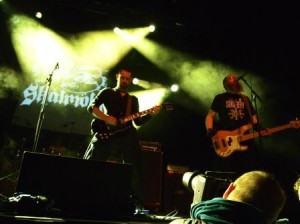 As often happens, however, the seeds of victory are sown in the ashes of defeat. If Viking metal is music that Vikings were into, then that is what we should seek. In the interest of metal science, I traveled to that most Viking nation, Iceland. Through extensive and painstaking field research I discovered a true Viking metal band that I could never have discovered at home: Skálmöld.
As often happens, however, the seeds of victory are sown in the ashes of defeat. If Viking metal is music that Vikings were into, then that is what we should seek. In the interest of metal science, I traveled to that most Viking nation, Iceland. Through extensive and painstaking field research I discovered a true Viking metal band that I could never have discovered at home: Skálmöld.
Skálmöld play an infectious strain of folk-metal utilizing traditional folk melodies while wisely replacing the polka-sounds with a more pounding brand of percussion. They often sing in chorus, as you might imagine real Vikings must have done, floating on the North Atlantic all summer with their bongos too soaked by waves to play.
But where Skálmöld earn their real heathen cred is in the lyrics. As you all know, Vikings were poets. Sung entirely in Icelandic (a language so close to Old Norse that Icelandic kids can read the original fourteenth-century sagas instead of Harry Potter) Skálmöld’s lyrics conform to the strict requirements of traditional Norse poetry.
If, like me, you have no idea what those requirements are, Skálmöld’s lyricist and bass player, Snæbjörn Ragnarsson, was kind enough to explain in an email interview.
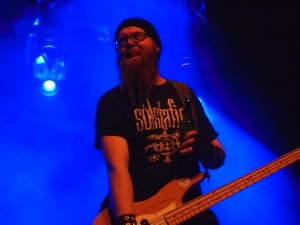 NCS: Can you explain a little bit about the poetry? What tradition are you following, exactly?
NCS: Can you explain a little bit about the poetry? What tradition are you following, exactly?
SR: Well, where to begin? I have to admit that I really don’t know too much about the history of Icelandic poetry, but it is probably the same age as the nation itself (not so old then J). The matter of the fact is, though, that the rules are quite strict. Rhyme is quite important, but in the end not mandatory. I use it almost always, and most other lyricist/poets I know of do as well. What really matters and is the soul of Icelandic poetry is the alliteration.
Wikipedia says this: “In language, alliteration is the repetition of a particular sound in the prominent lifts (or stressed syllables) of a series of words or phrases.” And this is all true, but now it gets tricky because the alliterative in Icelandic poetry has to be correct. Exceptions are really frowned upon and considered plain wrong.
The main rules go like this: The first line of the verse is stressed twice with alliterative and then the second line has to start with the same one. And this has to be precisely like this, no more and no less. Wikipedia uses this as an example: “Peter Piper Picked a Peck of Pickled Peppers.” This will not do. We are not in a competition of how many you can get, just two in the first line and one in the second. Let’s use the first verse of “Kvaðning” from Baldur as an example (actually one of my own personal favorites from Baldur).
Ligg ég eftir langa drauma,
leggur stirður, hugur sljór.
Hatrið finn ég kröftugt krauma,
kreistir hefnd er fyrrum sór.
Heiðin býr að hættum blindum,
horfi ég mót svörtum tindum,
Hel býr þar í mörgum myndum:
myrkur, kuldi, ís og snjór.
As you can see, there are always two words in the first line starting with the same letter, and then the second line starts with a word beginning with the same one. This really makes the rhythm extra cool when it is properly done when you think about it and listen carefully. I am leaving out a whole bunch of nerdy rules; for example, you can use all vowels together as alliterative, but the consonants have to be the same. And if the letter “S” is used together with another consonant it has to be like that all the way (most of the time J). See this example taken from the song “Hefnd,” from Baldur – the part of the foe (that is sung by Addi from Sólstafir).
Deyja allir mínir árar,
örlög dís á kálfsskinn párar.
Svartar nætur,
svíkja fætur,
svíður hönd er vatnið gárar.
This is actually a limerick, so the accented alliterative divides to three lines in the second half (yet another nerdy rule). But you hopefully get the meaning of all of this, even though there is a lot more to it.
 NCS: How closely are you following the tradition? Are you singing in the Icelandic version of iambic pentameter?
NCS: How closely are you following the tradition? Are you singing in the Icelandic version of iambic pentameter?
SR: I follow the tradition extremely closely, and the short answer to the question is “yes.” Iambs are a big part of it, but it stretches further than that. The thing is, though, that I always write words to music, not vice versa, and most of the time it just fits. But sometimes the phrasing of the riffs just doesn’t complement the poetry and then I just bend it as I have to. Bend the poetry I mean –I always put the music first and lyrics second. But I never abandon the rules completely, I just make my own version of them when I need to, and the beauty of it is that one can always make it work out.
NCS: Do you use kennings?
SR: No I don’t. Not with Skálmöld, at least. I have tried it but I really do not connect with it. Funny that you ask, though, since I was trying out some verses with possible future Skálmöld stuff. I need to practice if I am to use it properly. It is not the hardest form of Icelandic poetry but it has to be superbly done to sound strong. You can’t fake it.
NCS: Which comes first – music or story? How do you fit them together?
SR: With both Baldur and Börn Loka the story came first. Somewhere along the way I then divided the story up into chapters and gave them names. Alongside all of that we wrote songs and slowly they fell into place. If we feel like a song would fit a certain part of the story, it gets that spot in the sequence, and so it goes until the story is completed. Only then I sit down to write the lyrics. So – story, music, lyrics.
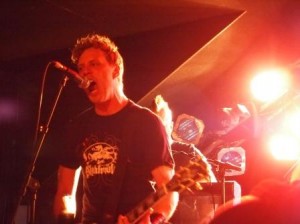 NCS: What is the story on Börn Loka? Some of the song summaries on the fan page you linked to on Facebook sound like things from the Eddas, but not quite the way I remember them.
NCS: What is the story on Börn Loka? Some of the song summaries on the fan page you linked to on Facebook sound like things from the Eddas, but not quite the way I remember them.
SR: The story really is a collection of situations from the Eddas put into a different framework. “Börn Loka” means “Loki’s children” and actually we come across all of them in the story. The three famous ones are Fenrisúlfur, Miðgarðsormur, and Hel; and the other three are Sleipnir, Narfi, and Váli. The story begins when Óðinn asks a poor and tattered mortal, called Hilmar, to fight the three famous children of Loki. The story takes us through the three battles, and some things and situations related to them, as well as encounters with rest of Loki’s offspring.
You are correct; most of the stories are taken from the Eddas and changed a little bit. One example is that in the originals Miðgarðsormur and Þór are arch enemies and fight frequently. One story talks about how Þór kills the largest ox of Miðgarður, cuts off its huge head and rows out to sea. Once there, he throws out a line and a hook attempting to catch the serpent, and uses the bull’s head as bait. In my story it is not Þór, but Hilmar who kills the ox and goes out on the boat. I do this several times on the record; and that sums up the story of Hilmar and Börn Loka. And of course there is a little bit more to it, betrayal and Viking pride and victories and loss and so on.
NCS: I’ve read that when you first got started, you intended to use a lot of traditional folk instruments, but ended up with a third guitar instead. How did that happen, and how much of the folk tradition do you use in the music itself? (This is not always obvious to American ears. For most American listeners “folk music” means Peter, Paul and Mary).
SR: It is true; me and my brother, Baldur, have played all sorts of music together and we are very fond of folk music. In the beginning we thought that he would play whistles and recorders, the mandolin, maybe even the accordion and all sorts of stuff, and on top of that, occasional guitar. Björgvin was supposed to be the third guitarist and in the beginning we even thought he would not play but a riff here and there, once in a while.
This quickly changed. We found out that we wanted to go closer to metal than folk, so Baldur turned away from the folky instruments. Björgvin then ended up as a full-time rhythm guitarist since the writings evolved into, at times, complicated harmonies. I even find myself the only instrument playing rhythm live in some parts, because all of the three guitars are occupied with melodies. Music-wise, though, we use quite a lot of folk stuff.
Obviously some of the riffs and lines are folk-based and on top of that, we use quite a lot of Icelandic traditions in the music, but more [often] than not, we put a twist on it. Icelandic critics have spoken a lot for our singing in fifths (traditional Icelandic chanting) but in reality we have only done that once, and that is hidden quite well (it is on Börn Loka – pint of beer for you if you spot it ;)). Funny enough, they speak quite a lot of my kennings as well, although not existing.
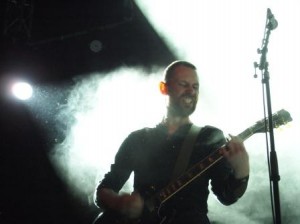 NCS: I almost asked about the singing; I had assumed that the choruses were, you know, choral. Then I read that choral music was only introduced to Iceland in the early 20th century. After seeing your TV spot with HAM last summer, I thought maybe you were doing some kind of traditional chanting, but now you tell me that is only once the case. It looks like I am going to have to do some research before I can earn that pint!
NCS: I almost asked about the singing; I had assumed that the choruses were, you know, choral. Then I read that choral music was only introduced to Iceland in the early 20th century. After seeing your TV spot with HAM last summer, I thought maybe you were doing some kind of traditional chanting, but now you tell me that is only once the case. It looks like I am going to have to do some research before I can earn that pint!
SR: We are surely doing quite a lot of chorals, but we arrange them in the manner we feel like when it happens. The arrangements can be quite unorthodox and complicated. Gunnar Ben is the boss when it comes to this – after all, he is the classically trained choir conductor. The arrangements are very often influenced by the tradition, but only once have we used parallel fifths all the way. (http://en.wikipedia.org/wiki/Consecutive_fifths) (http://youtu.be/n3NC02f6K4c) That is the real Icelandic tradition and we use it in the last part of Gleipnir, on top of this Irish folk sounding melody. That kinda fucks it all up, but the singing is indeed in consecutive fifths.
NCS: Do you have touring plans yet? What are the odds of U.S. dates?
SR: We are slowly putting next year together. I would not count on us coming to the U.S. next year, but let’s not rule it out completely. We will at least do some European festivals and tours. But I promise that we shall come to the U.S. no later than 2014.
NCS: Edda’s guest vocals on “Hel,” are the first example I know of a song with male/female vocals where both are growling. It works so well, I can’t wait to hear from all the readers telling me who else has already done it. How did that come about on this album?
SR: I hadn’t really thought of that – about the male/female part. Please let us know when the readers prove us wrong. I would really like to hear some other bands do that. I have known Edda for years and years. We have both been around the Icelandic scene for a long time. About the same time as we were forming Skálmöld, her band, Angist, was formed (be sure to check them out, they are totally rad). Edda is the front figure of Angist and although I had known her for all this time I had never heard her sing, let alone growl. And man, the sounds she makes are just inhuman.
Then, when we were writing Börn Loka we had this idea of using a different voice for each enemy that Hilmar has to face. My brother and guitarist, Baldur, handles the screaming voice of Fenrisúlfur. And Gunnar, our keyboardist, takes on the role of the chanting/singing/rhyming Miðgarðsormur. So, we had this one foe left without a voice, and since it was Hel, a female character that is more scary than all the other scary creatures of the world combined, it was incredible luck to actually have the phone number of such an incredible female vocalist. And she just said yes and then killed it in the studio. One of the absolute highlights of the album for me.
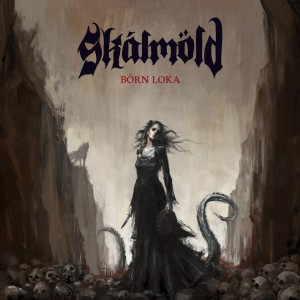 NCS: The artwork throughout the booklet is just gorgeous. Can you tell me about it?
NCS: The artwork throughout the booklet is just gorgeous. Can you tell me about it?
SR: We almost blew that one, actually. Somehow we managed to get ourselves into a tight spot with time limits with the artwork and had no idea how to get out of it really. We then contacted the Icelandic video game developer company called CCP Games, mostly known for the MMORPG EVE Online, because, you know, they do graphic stuff.
We got an answer from their Head Art Director, a guy called Ásgeir Jón Ásgeirsson, and he not only sounded interested but was also a huge fan of the heathen tradition and the Icelandic heritage. And within just a few weeks he had done the whole cover. I don’t know how he did it, but obviously we were very happy! You should expect more collaboration from him and Skálmöld – if he is up for it, that is. You can, and should, check out his portfolio here: www.asgeirjon.com. You will find a lot of the original artwork from the album there.
NCS: You’ve posted on Facebook about a new video – do you want to tell a bit about that?
SR: Not much to tell really. We wanted to do a video and knew of this guy, Bowen Staines of Don’t Panic Films, who did the “Fjara” video for Sólstafir. That of course is an excellent piece of work and since he was up for it, it all began to happen. Truth to be told, I have not been much around the making of the video. They are about half way into shooting and the footage I have seen looks beyond epic and cool. Don’t want to squeal too much of it, but there will be a whole lot of Icelandic landscape and mythology. Don’t know when it will be finished but hopefully early next year.
NCS: In less than four years, Skálmöld has brought heavy metal out of decades of obscurity into the Icelandic mainstream. How did you do that? (Don’t deny it – I’ve got witnesses.)
SR: I won’t deny it; this is true. And I even take great pride in it! With that said, it should be noted that even though we are a metal band we are in many ways quite accessible. So that helps. And on top of that, the lyrical theme is very Icelandic and hits a soft spot with many, as the poetry itself. But this is a question not so easy to answer nevertheless.
When we started the band we had no plans that came close to what the reality is today. But when we actually decided to make the first album, Baldur, we decided to do it properly and go all in. That meant, for example, quite a financial commitment and an immense amount of work. And when this had all begun we just refused to go into that battle convinced that we would lose it.
So, metal or not, we stormed into all radio stations with loads of CDs and basically made them listen. Same thing with the rest of the media, and everyone else. I do believe that much of marginal music never makes it to the popularity it could, simply because the band doesn’t bother to present themselves decently. And I say “bother” because the band members often label their music before they give the public a chance to do so.
My advice to all bands is simply to have enough respect for their material to produce it properly and then make it accessible. Pop, Rock, Rap, Metal or Classical, it doesn’t matter. Three years ago, I would have laughed if someone would have told me that Skálmöld would become so popular, but I am very pleased that we followed our instinct and pushed it. Hopefully we have paved the road for other bands as well.
EDITOR’S AFTERWARD: Find out more about Skálmöld here: http://www.facebook.com/skalmold
I couldn’t resist using the following pics of some of Skálmöld’s Viking metal fans after Gemma told me about them.

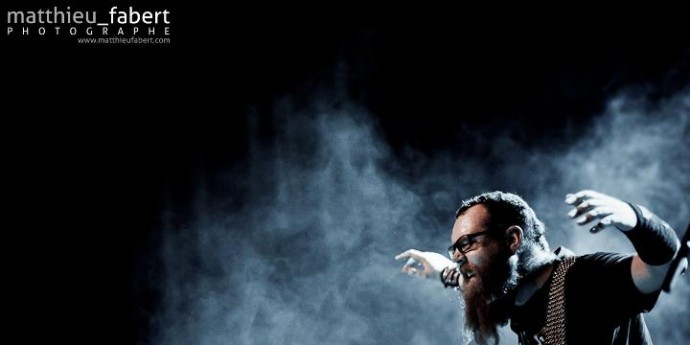
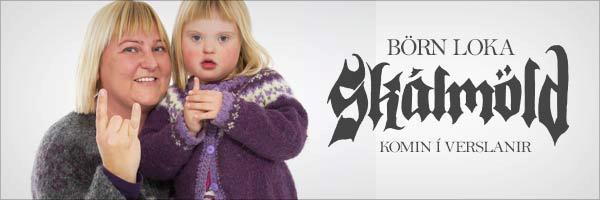
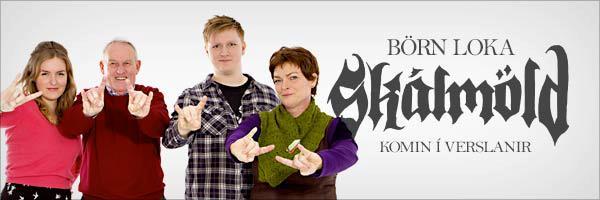

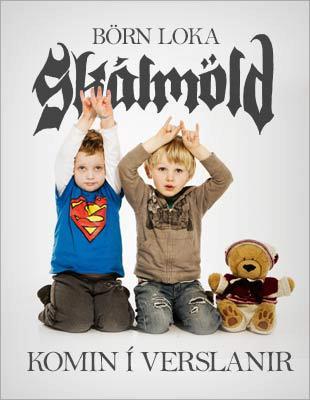

This is the first I can recall hearing of this band. I think I may be smitten.